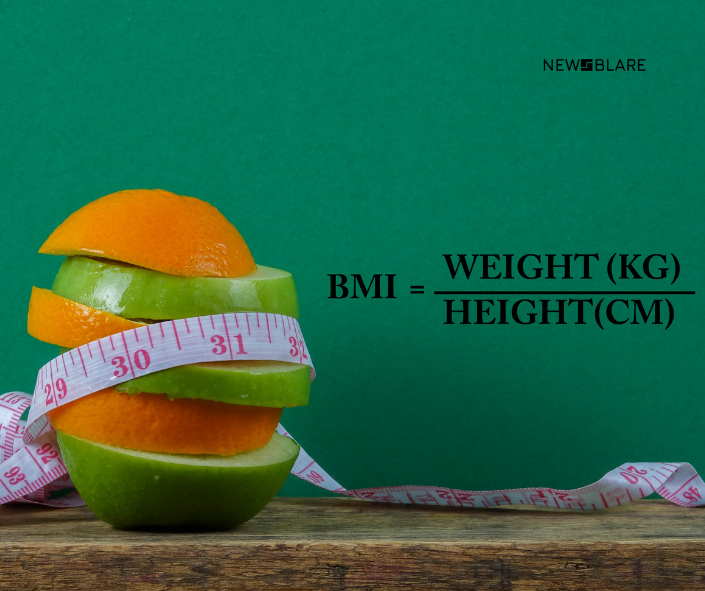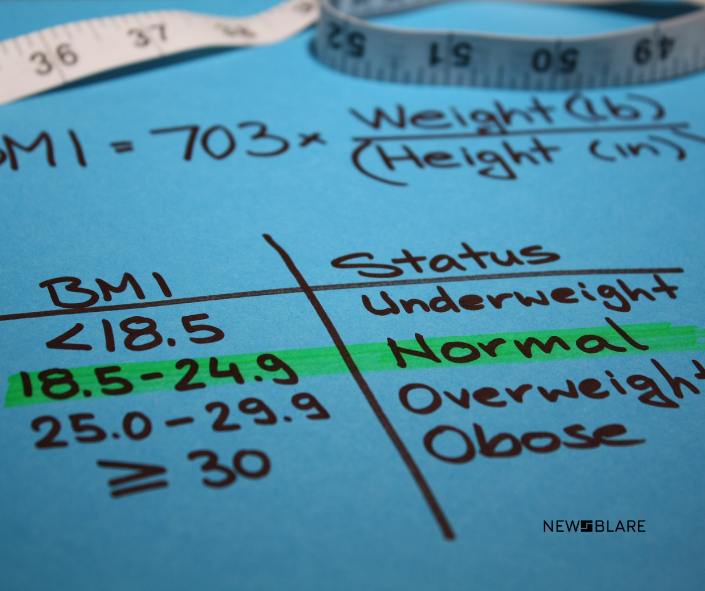Body mass index (BMI), which is a rapid estimate of body fat in relation to weight and height, is a health statistic used to determine a person’s weight category. Although BMI is not the most reliable indicator of body fat, it is still the simplest and most affordable method. Are you looking for how to calculate BMI?
You must be aware of your current weight and height before how to calculate BMI. BMI can be calculated in a variety of methods depending on the measurements used. Keep in mind that body fatness may not always be adequately represented by BMI. To evaluate and change your weight, take the relevant measurements and then compute your BMI.
What is Body Mass Index (BMI)?
Body Mass Index, or BMI, is a metric used in medicine to calculate how much body fat a person has depending on their height to weight ratio. The BMI is a practical and economical way to divide weight into categories including underweight, healthy weight, overweight, and obesity. It’s crucial to remember that BMI does not, by itself, offer a complete health diagnostic. There are situations where BMI may not be reliable, despite the fact that it typically correlates with amounts of body fat.

For instance, changes in lean body mass, which includes muscle and bone, may cause two people with the same BMI to have different body fat percentages. A higher BMI might be a sign of greater body fat, but it can also be a sign of more lean body mass. It’s important to maintain a healthy level of body fat since it helps with nutrient absorption, gives you energy, controls your body temperature, and safeguards your organs.
It’s crucial to remember that the standard BMI chart shouldn’t be the only tool used to assess a child’s or teen’s weight. In these situations, it is advisable to speak with a medical professional who can establish the ideal weight range based on the patient’s age, height, and needs.
What is the Use of BMI?
A screening tool for assessing weight categories, BMI does not offer a diagnostic for body fatness or general health. In order to ascertain whether BMI causes any health problems, additional evaluations by healthcare professionals are often required. These evaluations might look at skinfold thickness, dietary patterns, levels of physical activity, and family medical history, among other things.
The following ranges are typically used to identify weight categories based on BMI (in kg/m2):
- Underweight: BMI less than 18.5.
- Optimum range: BMI between 18.5 and 24.9.
- Overweight: BMI between 25 and 29.9.
- Class I obesity: BMI between 30 and 34.9.
- Class II obesity: BMI between 35 and 39.9.
- Class III obesity: BMI greater than 40.
It’s crucial to remember that healthcare professionals use other methods in addition to how to calculate BMI to classify different weight categories. Other techniques include taking your waist circumference, using skinfold callipers to measure the thickness of your skin in specific places on your body (such the back of your upper arms and between your shoulder blades), and, less commonly, using DEXA scans and air displacement plethysmography (ADP).
Potential health risks are also identified by BMI assessment. Underweight people who have a BMI < 18.5 may be more likely to become ill with the following conditions:
- Malnutrition
- Anaemia
- Weakened immune system, leading to increased susceptibility to infections and illnesses
- Osteoporosis
- Infertility
What is Healthy BMI?
If you are looking for how to calculate BMI, you should know this first. A healthy BMI for individuals is between 18.5 and 24.9, according to the CDC. A BMI of 18.5 or below suggests underweight, and a BMI of 25.0 to 29.9 denotes overweight. Obesity is categorise if the BMI is greater than 30.0. However, it is crucial to understand that factors other than only body fatness have an impact on general health.
An individual’s general health and susceptibility to particular medical diseases are influenced by their genetics, degree of physical activity, usage of tobacco or alcohol, and mental health issues. It is important to understand that while BMI can be used as a screening tool, it cannot accurately diagnose body fat or a person’s health. That’s how to calculate BMI.
How to Calculate BMI?
If you are looking for how to calculate BMI, follow these steps:
- Divide the number you weigh in pounds by 703.
- Given that there are 12 inches in a foot, divide the result by your height in inches.
- Subtract your height in inches from the result once more.
Let’s take a person who weighs 150 lbs. and is 5 feet 7 inches tall (or roughly 68 inches) as an example. Their BMI would be determine as follows:
- Step 1: 150 x 703 = 105,450
- Step 2: 105,450 / 68 = 1,550.74
- Step 3: 1,550.74 / 68 = 22.8
Their BMI would be 22.8 as a result.
BMI Charts
For both adults and children, the BMI is calculated using the same formula, but the results are interpreted differently. Age and gender have no effect on BMI in adults, but they do have an impact on how BMI is interpret in children and adolescents. Here’s how to calculate BMI chart.

Adults BMI Charts
Regardless of gender or age, the Centers for Disease Control and Prevention (CDC) has developed weight status categories for adults 20 years of age and older. These categories are used to evaluate a person’s weight status and are on Body Mass Index (BMI).
| BMI | WEIGHT STATUS |
|---|---|
| Below 18.5 | Underweight |
| 18.5 – 24.9 | Healthy weight |
| 25.0 – 29.9 | Overweight |
| 30.0 and above | Obesity |
Children or Teens BMI Charts
A percentile chart is based on BMI is used to calculate the weight categories for kids and teenagers. It determines whether their BMI is higher or lower than that of their peers by comparing it to others who are the same age and gender.
| WEIGHT CATEGORY | BMI PERCENTILE |
|---|---|
| Underweight | Less than 5th percentile |
| Healthy weight | 5th percentile to 85th percentile |
| Overweight | 85th percentile to less than 95th percentile |
| Obesity | 95th percentile or greater |
| Severe Obesity | 120% of the 95th percentile or greater OR 35 kg/m2 or greater |
What are the Limitations of BMI?
Due to a number of factors, the typical BMI chart has limits. Because of these restrictions, it’s crucial to avoid putting too much focus on your BMI. While knowing how to calculate BMI, you should know these limitations.
- Since BMI doesn’t measure body fat directly, it is an inaccurate indicator of body fat.
- Except for age and sex in children and teenagers, BMI charts often do not take into account factors that may affect body fat or muscle composition, such as age, gender, race, and ethnicity.
- When defining your weight category, experts advise taking into account additional characteristics like the distribution of fat, general muscle mass, age, and gender.
- When determining your BMI, keep these restrictions in mind.
- At the same BMI, women often have more body fat than males.
- variable racial and ethnic groupings can have variable amounts of body fat.
- Older people typically have greater body fat than younger persons.
- Compared to non-athletes, athletes often have lower body fat percentages.
Difference Between BMI and Body Fat Percentage

A person’s weight in relation to their height is determine by their BMI, which is a numerical calculation. It entails multiplying a person’s height (measured in feet or metres) by the square of their weight (measured in kilogrammes or pounds). BMI is mostly use by healthcare professionals as a screening tool to find people whose weight falls within a range that could potentially cause health problems.
However, it’s critical to realize that neither the BMI nor its ability to how to calculate BMI of a person’s body fat percentage are design to offer a conclusive diagnosis. The ratio of a person’s body fat to lean tissue, such as muscles, skin, bones, and organs, is refer to as body fat percentage. Body fat percentage can be determine using a variety of techniques, such as calliper measures, underwater weighing, and the use of specialized equipment like the Bod Pod.
It is important to remember that a higher body fat percentage is linked to a higher chance of getting some obesity-relate disorders. Therefore, even while BMI can provide a broad indicator of potential health hazards, it is crucial to take into account additional variables and more accurate techniques when evaluating a person’s body composition and health state.
Health Issues for Obese Adults
Obese people are more likely to develop a wide range of illnesses and ailments, including the following:
- Dyslipidemia, which includes high triglycerides, low HDL cholesterol, and high LDL cholesterol.
- Diabetes type 2
- Stroke
- Gallbladder conditions
- Several malignancies (liver, gallbladder, kidney, endometrial, breast)
- Osteoarthritis (a disorder of the joints characterised by the deterioration of bone and cartilage)
- Issues with breathing and sleep apnoea
- Increased oxidative stress and ongoing inflammation
- Death from all causes (mortality)
- Hypertension, or high blood pressure
- Cardiovascular disease
- Poor standard of living
- Clinical depression, anxiety, and other mental disorders are examples of mental illnesses
- Body aches and physical functioning issues
How Can You Lower Your BMI?
Most people can do this by increasing their physical activity and changing their eating habits. When better diet and exercise do not produce the intended outcomes, healthcare professionals may advise weight loss drugs, bariatric surgery, or other options. Follow these while searching how to calculate BMI.

It is advise to aim for 30 minutes of daily walking, or about 3,000 to 5,000 steps (1.5 to 3 miles), for someone with a higher BMI who wants to increase their activity level. This recommendation also holds true for those starting to increase their daily exercise who have a lower BMI. Find out how to calculate BMI.
It is advise for people with a lower BMI who are already active to walk for 60 to 90 minutes, which for most people equals to 10,000 steps (or 5 to 7 kilometres). The average American should aim to exercise for 30 minutes every day, on average. It is wise to speak with your doctor if you are worry about weight loss or want to try new diet or exercise regimens.
Conclusion
In conclusion, determining one’s BMI is a simple way to evaluate their body weight in relation to their height. BMI offers a numerical measure of overall body composition by dividing weight (in kilograms) by the square of height (in meters). This straightforward computation can help people evaluate the possible health risks linked with their weight and can direct them towards making well-informed decisions regarding their well-being. So, if you are looking for how to calculate BMI, we hope this article helped you.
Also Read: Top 50 Best Hollywood Movies of All Time

10 Comments